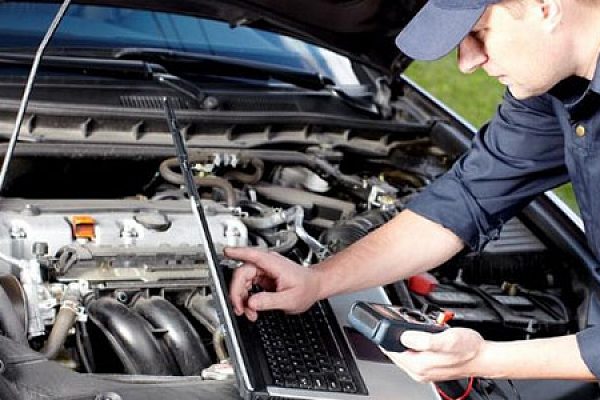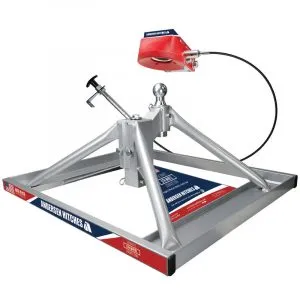Classic cars represent a sense of nostalgia and pride in craftsmanship that cannot be replaced by modern vehicles. But these beauties require more than just the occasional oil change; they must also be properly tuned up to keep them running smoothly and efficiently. Tuning classic cars is an art form that requires extensive knowledge of both mechanical and aesthetic components.
If you’re an enthusiast of vintage cars and want to learn everything there is to know about tuning them up, then you’re in luck- this blog post has all the info you need! You’ll find out about the basics of tuning classic cars, from selecting the right parts and tools to understanding how different systems interact with each other.
We’ll also discuss some advanced techniques for those who want to take their engine performance up a notch. So read on for everything you need to know about tuning classic cars!
Why Should You Tune a Classic Car?
Tuning a classic car is an excellent way to make it stand out from the crowd and add value to your investment. It also gives you the opportunity to increase its performance, customize its looks, and improve its safety features.
The increased engine power from tuning will give you better acceleration and more thrilling rides with improved cornering and braking capabilities. You can also enhance the comfort of the ride, giving you a more enjoyable driving experience all around.
In addition, tuning allows for the upgrade of important safety elements, such as airbags and brakes, ensuring that you stay safe no matter where your classic car takes you.
Step-by-Step Guide to Tuning a Classic Car
Tuning a classic car can be a rewarding and challenging experience, but it’s important to understand what you need to do in order to get the process started.
1. Identify Your Goals
The first step in tuning a classic car is to identify your goals for the project. Are you looking to make minor adjustments or major changes? Do you want to modify its appearance or improve its performance? Knowing what your end goal is can help you figure out which parts and tools are necessary for the job.
Additionally, understanding what success looks like for this project can help keep you on track and ensure that you’re making the right upgrades.
2. Research Parts
The type of parts needed will depend on what kind of changes you want to make, whether they be minor tweaks or major overhauls. If budget is an issue, consider researching used parts as well as new ones. Sometimes used parts from other classic cars can be adapted for use in yours, saving money in the process.
It’s also important to research compatibility between parts, as certain modifications may require compatible components in order for them to work properly together.
3. Gather Your Tools
In order to tune any car, certain tools are required. This includes basics such as wrenches, screwdrivers, pliers, wire cutters/strippers, nut drivers and an adjustable wrench set—all of these items should come with the most basic tool kits available at hardware stores or online retailers.
Other speciality tools may also be necessary depending on the type of modifications being made; some examples include spark plug sockets (for changing spark plugs), socket sets (for removing/installing nuts and bolts), torque wrenches (for tightening nuts and bolts) and multimeters (for testing electrical systems).
4. Open Up Your Engine Compartment
Once all necessary supplies have been gathered, it’s time to open up your engine compartment so that tuning can begin. Depending on the model of your car this could involve simply lifting the hood or more extensive measures such as removing screws from side panels and other areas which may house wiring systems or other components needing attention during tuning sessions.
Once opened up, all components should be checked for signs of wear, corrosion or damage before any work is done – if anything looks suspect then it should be replaced before proceeding further with tuning works.
5. Perform Necessary Maintenance
Maintenance tasks come next; these include:
- cleaning off dirt/grime from various surfaces using either compressed air (if possible) or rags/towels with some kind of solvent such as WD40 or brake cleaner depending on where it needs cleaning;
- checking levels of fluids such as oil coolant etc & topping up if required;
- replacing air filters & spark plugs if needed;
- lubricating moving parts where needed & inspecting all hoses & wires for any signs of wear/damage etc.
6. Customizing Aspects Of The Vehicle
Now comes the fun part – customizing aspects of your vehicle! Start by changing out any old headlights/taillights with modern versions. LED headlights are becoming increasingly popular due to their bright output & low power draw meaning less strain on battery life & fuel economy too.
Next, look at modifying suspension settings. Springs & shocks can play large roles in how much grip & handling capabilities vehicles have, so adjust them based on desired results whether this be off-roading capabilities, quicker accelerating times etc.
Finally, install aftermarket exhaust systems – these not only look great but often produce deeper tones than their stock counterparts meaning greater sound output when driving around town.
7. Finishing Touches
All that remains now is adding finishing touches like detailing paintwork, applying custom decals, installing seat covers, replacing gear knobs etc. These don’t necessarily add performance enhancements but do help personalize vehicles giving owners unique aesthetics that make them stand out from others.
Conclusion
Tuning a classic car can be an incredibly rewarding experience, but it’s important to know what you’re getting into before you start. Identifying your goals and researching parts that fit your budget are key components of the process. With the right knowledge and dedication, you can successfully tune a classic car and keep it running well for years to come.
Don’t forget to visit Dyler for a selection of gorgeous examples from the golden era of the automobile to add to your collection. Good luck with all of your classic car projects!





